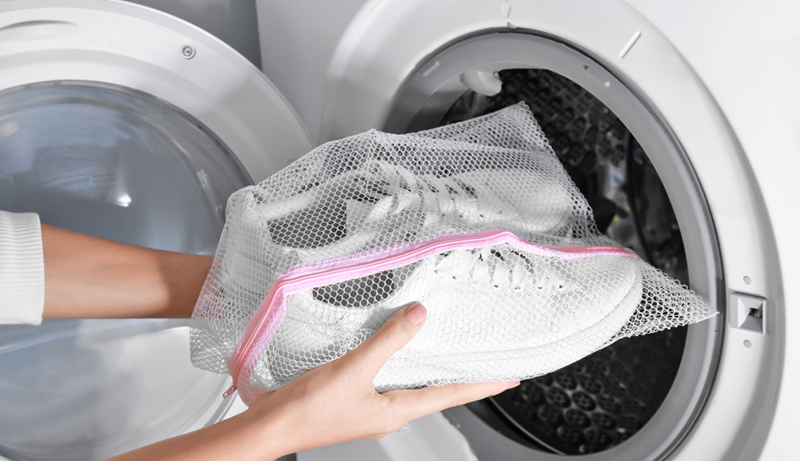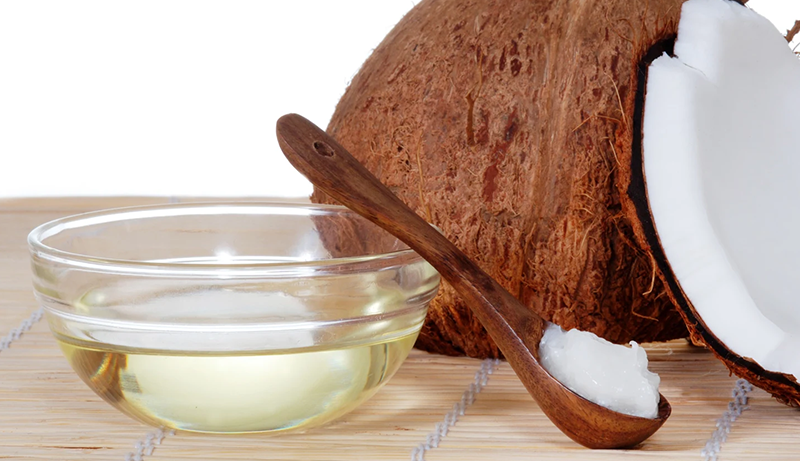You may have thought, “Can you put shoes in the washer?” if you’ve ever looked down at your feet while sporting a pair of sneakers that are exceptionally well-loved (read: filthy). Shoes can easily develop into a haven for filth, bacteria, and odors because they take the most abuse from any busy lifestyle.
It’s acceptable to throw your beloved pair of shoes in the washer when they start to smell a little bad and let a machine handle the dirty work for you. But washing your shoes in the laundry is more complicated than just putting them in and letting the machine do its job. You can take precautions to safeguard your shoes and raise the likelihood of a spotless result, just like with regular laundry.
To prevent harm to your shoes and your washing machine, American Home Shield® is here to walk you through the appropriate way to clean shoes in the washer.
Step 1: Check the tags.
Check the tags (often located beneath the tongue of the shoe) or the manufacturer’s website for suggested cleaning procedures before washing shoes in the washing machine. Even if you believe the shoes are machine washable, not all of them are. Similar to this, some materials demand particular handwashing techniques. Verify if the shoe’s kind and construction are appropriate for your washing machine.

Step 2: Remove laces and insoles.
Remove your shoes’ insoles and shoelaces. Since many insoles are sensitive and laces can tangle in the washing machine, it is better to remove them.
By using a soft brush or towel and liquid detergent together with dishwashing soap, you can manually clean the laces and insoles. Before putting them back where they belong, let them totally air dry. As an alternative, you can put your sneakers and laces in a mesh garment bag.
Step 3: Pre-treat the soles.
To clean the bottoms of your shoes of any debris or grime, use a soft brush.
Step 4: Load the machine.
In the washing machine, put the shoes. Pro tip: Washing shoes with numerous old towels balances the load, stops your shoes from banging about during the cycle, and guarantees that the dye from the new towels won’t affect your shoes.
Step 5: Start the wash.
Remember that a gentle, cold-water cycle is ideal when learning how to wash shoes in a washing machine because it will help keep your shoes safe. Avoid using powder detergent since it can clog shoelace holes and shoe bottoms. Use washing pods or liquid detergent as an alternative.
Step 6: Air-dry your shoes.
The time has come to dry your shoes after the wash cycle is finished.
However, a word of caution—do not dry your shoes in the dryer. The glue that holds shoes together might be harmed by dryer conditions. Even some fabrics or materials can shrink at extreme heat, permanently distorting your shoes and impairing their fit and functionality.
Find a cool, sunny, and well-ventilated area and leave your shoes there to dry properly. To assist your shoes maintain their shape while they dry, stuff several little towels inside of them. In general, you should only wash your shoes if you have enough time to let them completely air dry. If not, you are merely providing a moist habitat for unfavorable germs to flourish. You can direct a fan or blow dryer onto your sneakers to expedite the process.
Step 7: Reassemble.
Reinstall the soles and laces after your shoes have been cleaned and dried. Rock your spotless shoes after that.
When washing shoes in the washer, avoid these mistakes

While washing your shoes in the washing machine can seem straightforward, there are a few things you should avoid doing. Here is a brief list of the important items to stay away from:
- Never wash materials like suede or leather in a washing machine.
- Use only cold or warm water cycles. Your shoes may become warped by hot water, which can also harm the fabric and make the colors fade.
- Use liquid detergent instead of powder since powder detergent may not dissolve correctly and may get caught in your shoes.
- Never wash your shoes without first taking out the insoles and laces. Laces should be kept in a separate laundry bag or pillowcase in the washer, while insoles should be hand-washed.
- Keep your shoes out of the dryer. Shoe glue can become warped and damaged in dryers.
Alternate Methods to Machine-Washing Shoes
Being wary of cleaning your shoes in the washing machine is common. If your shoes aren’t suitable for washing or you don’t want to take the chance of ruining them, use one of the following manual cleaning techniques:
- Wash cloth shoes by hand. Hand-wash cloth shoes in a solution comprised of one teaspoon of dish soap and two cups of warm water. Use the cleaning solution and a toothbrush to scrub the shoes, then dry them by wiping them off with a paper towel. You can use this mixture to wash your insoles as well.
- For leather shoes, use vinegar. To clean leather shoes, mix distilled white vinegar and cold water in equal proportions. Use a cloth dipped in the solution to clean your shoes. Let them air dry after that.
- Deodorize. Instead of giving your shoes the full cleaning treatment, you can consider deodorizing them to combat their odor. There are many excellent store-bought shoe deodorizers, like the Poo-Pourri Shoe Odor Eliminating Spray, the Woodlore Cedar Shoe Fresh Inserts, and the Odor-Eaters Odor-Destroying Insoles. Sprinkle baking soda on your shoes, then leave them alone for the night to act as a DIY deodorizer. By morning, any offensive odors will be significantly reduced, if not completely gone.
Final Verdict
It is simple and effective to wash your shoes in the laundry, but there are risks involved. Be cautious of elements like shoe material, wash cycle type, and suitable drying techniques when learning how to wash shoes in the washing machine. Wash them by hand if you’re unsure of anything.
To keep your washer and dryer in good condition for all of your laundry needs, it’s also critical to complete washer and dryer maintenance. Consider enrolling in a home warranty program that covers your washer and dryer under warranty. A washing machine warranty aids in providing financial security and comfort of mind.
When covered components of your home systems and appliances malfunction as a result of normal wear and tear, American Home Shield helps with the cost of repair or replacement. Therefore, if your washing machine isn’t draining water properly or is broken, just submit a repair request, pay your Trade repair Call Fee, and we’ll send a technician to your house to fix it.






Leave a Reply